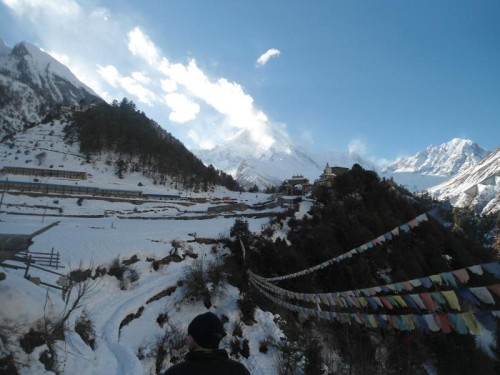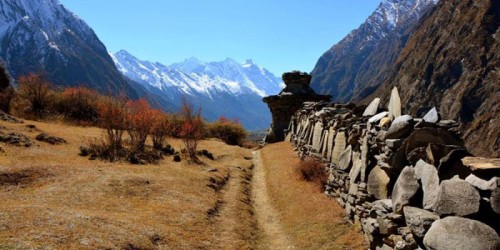Manaslu Region Trekking
Manaslu Region Trekking offers a stunning and less crowded Himalayan adventure in Nepal. Trek through remote villages, lush forests, and High Mountain passes while experiencing rich Tibetan culture. Explore popular routes like the Manaslu Circuit and Tsum Valley with expert guides, detailed itineraries, and all necessary permits.
This region is ideal for all trekkers, including families, couples, students, and groups, but requires good physical fitness as well as perfect for those seeking pristine landscapes, challenging and less crowded trails, off-the-beaten-path experiences, and authentic cultural encounters in a breathtaking natural setting.
Manaslu Region Trekking Highlights
- Breathtaking views of Mount Manaslu (8,163m), the eighth highest peak in the world
- Crossing the challenging and scenic Larkya La Pass (5,106m)
- Exploring the remote and culturally rich Tsum Valley, a hidden Himalayan gem
- Experiencing authentic Tibetan-influenced Buddhist culture and monasteries
- Trekking through pristine forests and diverse landscapes including rhododendron and pine forests
- Encountering unique Himalayan wildlife like blew sheep and Himalayan thar
- Visiting traditional villages with warm and welcoming local communities
- Less crowded trails offering a peaceful and off-the-beaten-path trekking experience
- Discovering ancient Mani walls, prayer flags, and sacred chortens along the route
- Opportunity to see stunning mountain panoramas including Annapurna, Ganesh Himal, and Manaslu ranges
Best Time to Trek the Manaslu Region
The best time to trek the Manaslu Region is during spring (March to May) and autumn (September to November). These seasons offer clear skies, moderate temperatures, and stunning mountain views, making trekking conditions ideal. Seasonal changes greatly affect the experience, including weather, trail safety, and the beauty of the landscape.
In spring, you’ll see vibrant rhododendron blooms and experience some festivals. Early spring may have some snowfall, while late spring brings pleasant weather for trekking. Autumn offers stable weather, spectacular sunsets, and green scenery in the early season, changing to dry trails later. Festivals like Dashain and Tihar also take place in autumn.
It’s best to avoid the monsoon season (June to August) due to heavy rain and the winter months (December to February) because of extreme cold and snow on the high passes.
How difficult is Manaslu Region Trekking?
This is a common question from trekkers planning to explore the Manaslu region because there are many different trekking routes—some easy, some challenging. The region is suitable for most trekkers with a regular fitness level. Each trekking route has different itineraries and elevations, so the difficulty varies depending on the path you choose.
The Manaslu Region Trek is considered moderately to highly challenging because trek involves long walking days, steep ascents and descents, and crossing the high Larkya La Pass at 5,106 meters Altitude sickness can be a risk, so proper acclimatization is essential. The trails are less crowded and more rugged compared to popular routes like Annapurna or Everest, adding to the adventure. While some parts are manageable for fit beginners, preparation, stamina, and mental resilience are important for a safe and enjoyable experience.
Our guides have many years of experience and set a steady pace for trekkers during the trek. This helps make the walk more flexible and relaxing, so you will feel physically comfortable and acclimate quickly to the local environment to successfully complete the trek.



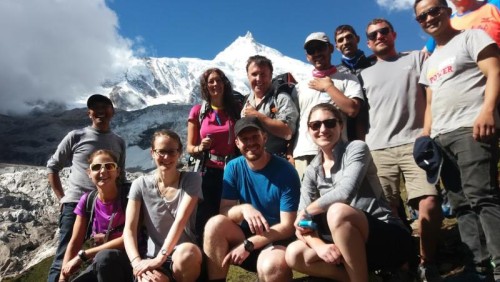


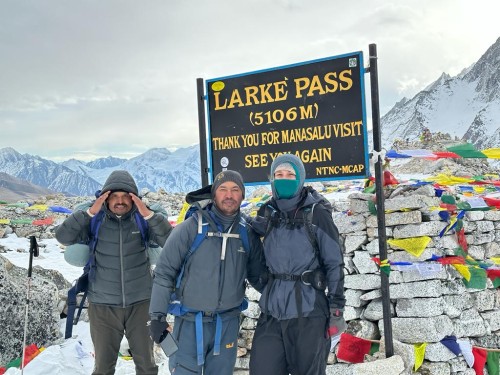
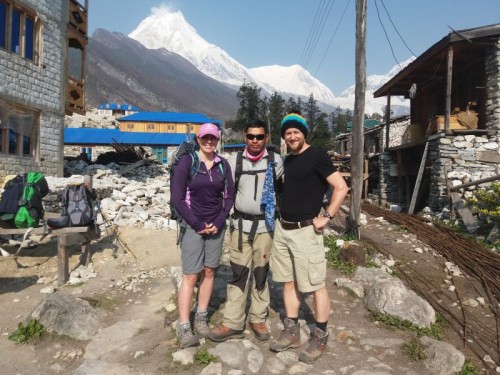
 USD 1050
USD 1050